
- Address : P.O. Box 11, Gannoruwa rd, Peradeniya, Sri Lanka
- E- Mail : director.hordi@doa.gov.lk
- Telephone :(+94) 081-2388011-12-13
- Fax :(+94) 081-2388234
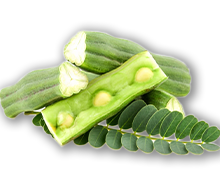
Moringa
Released Varieties
Climate requirements/ Areas suitable for cultivation
Soil
Seed requirement
Nursery management/time of planting
Land preparation
Planting
Spacing
Fertilizer
Water supply
Weed Control
Pest Management
Disease Management
In general, the drumstick plant has the ability to resist diseases. But there is a tendency to get infected due to climate change. This results in a reduction of quantitative and qualitative yields. Among drumstick diseases, fungal diseases cause more severe damage by shedding leaves and loss of commercial value.
This condition is caused by a fungus called Colletotrichum sp
Disease symptoms:
- Specific brown spots can be seen on the leaves.
- When the infection is severe, yellowing of the leaves may occur.
- Light pink and gray spots can be seen on infected stems.
Favorable conditions:
- 24 0C – 28 0C temperature and high Rh
Management:
- Infected plant parts can be pruned and burned to prevent the spread of the disease.
- Recommended protective and systemic fungicides for anthracnose can be successfully control the disease. Post-harvest interval of fungicides must be followed.
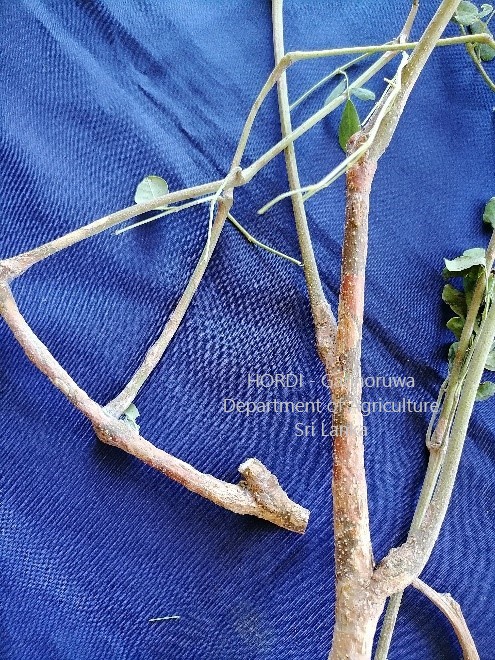 | 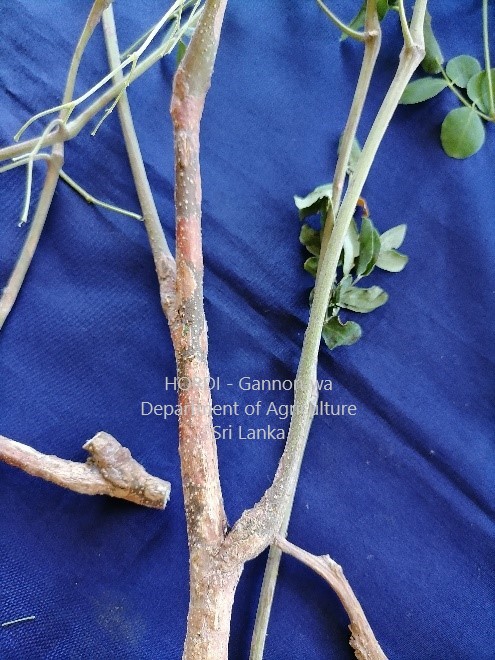 |
*Light pink and gray spots on infected stems of anthracnose
- This disease caused by Leveillula spp. Fungi
Disease symptoms:
- Infected leaves have white or light gray powdery mildew on the underside and yellow spots on the surface of the leaves.
- Infected leaves are prone to rolling upwards and shedding frequently.
- Infected plants may lose vigor and become infertile.
- Mature leaves can be infected first and when the infection is severe the plant may wither and die
Favorable conditions:
- Cloudy weather, 25 0C – 30 0C and high humidity are favorable for the disease.
Management:
- Maintaining field sanitation is important for disease control.
- Sulfur can be used as a chemical control method
Drumstick pod rot is often seen as a complex of fungi and pests. It is possible that this fungal disease entered our country through planting material and seeds imported from India for commercial cultivation.
- This condition is caused by the fungus Curvularis hawaiiensis (M.B. Ellis).
Disease symptoms:
- Ovate or oblong patches with light brownish-red margins, primarily may occur on green pods.
- These small spots combine with unfavorable climatic conditions to form large brown spots.
- In the absence of severe adverse climatic conditions, the crop does not suffer severe damage.
- The spots break out and the gums become swollen as the infection progresses
- When immature young pods are infected, the end of the pods may shrink and dry out.
- The condition of rot is worse with the maturing of the pods. Under this condition the yield can be severely damaged.
- When the pods are left in the plant for drying to extract oil, the pods explode, rot and secondary infections can occur.
Management:
This should clearly identify whether it is a fungal infection or an insect pest.
- Field sanitation is a very important factor in controlling this fungal disease.
- Cut and destroy the damaged pods. Avoid piling up in the field.
- The use of healthy planting material and seeds is very important.
- Fungicides can be used during the rainy season or in areas where the disease is severe. (Applying tebuconazole at a rate of 250 g / l EW 3.5 ml / l. However, it is not recommended to use more than 2-3 times per season as this fungicide is a systemic fungicide which can cause resistance to continuous application. There is a 21-day post-harvest interval for the above-mentioned systemic fungicide. Therefore, the use of fungicides can be recommended in the early stages of pod formation or in the flowering stage. The disease can be controlled by giving Mancozeb 75% WG 20g / 10l ratio or Propineb 70% WP 20g / 10l ratio or Flucinam 500 g / l 10ml / 10l at intervals of 7-10 days with this systemic fungicide.)
 |  |
*ovate or oblong patches with light brownish-red margins on pods
 | 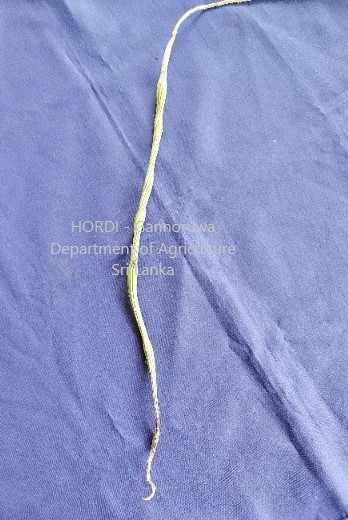 | 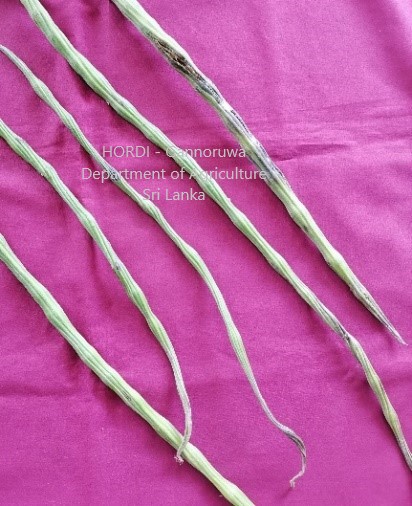 |
*Thinning of the tip of the pods when infected with immature young pods
